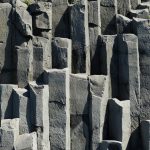The Mystery of Magnetic Mesoamerican Sculptures
We’re fascinated by the creative endeavors of those before us, especially when their art involves magnetism. New research, published in the Journal of Archaeological Science, suggests that ancient sculptors intentionally chose magnetized rocks when creating their masterpieces. Over 2,000 years ago, sculptors in modern-day Guatemala carved “potbelly sculptures” out of boulders. These sculptures depicted figures of obese humans nearly six and a half feet tall and roughly 22 thousand pounds. There’s more to these sculptures than what meets the eye, though.
The Case of the Magnetic Sculptures
In the 1970s, it was determined that some sculptures and statues from the Mesoamerica and other parts of the New World had magnetic properties. Archaeologists weren’t sure if this was intentional or if the magnetism was a coincidence, however.
The researchers in charge of a recent study mapped the magnetic properties of eleven of the sculptures created. They found that there were magnetic anomalies in certain areas on the sculptures, including the forehead, cheeks, and navel. The spots weren’t randomly distributed, which suggests that the sculptures intentionally formed the sculptures around the magnetic spots. Researchers believed that the sculptors created makeshift magnetometers (you can make your own, too!) by using magnetite and other naturally-occurring magnetic minerals. They used the magnetometers to find magnetic properties in the minerals to choose the boulders they wanted to sculpt.
What Magnetized the Rocks?
The sculptures that the researchers studied were made of basalt, a dark volcanic rock mainly composed of plagioclase and pyroxene minerals. Basalt isn’t necessarily magnetic in nature, but due to the presence of oxide minerals, it has the capacity to be magnetized by an external force, which can happen during the cooling process. In this case, however, researchers believe that the iron minerals within the basalt were magnetized by lightning strikes. Heard of this phenomenon before? If not, we’ve written about it in the past. So, there have been magnet fanatics like us over 2,000 years ago.
Are you interested in learning more about other ways creatives incorporate magnetism in their work? To stay up-to-date on the latest magnetic news and magnetic art finds— such as magnetic photography and muon art— be sure to follow along with our blog and subscribe to our monthly newsletter.

